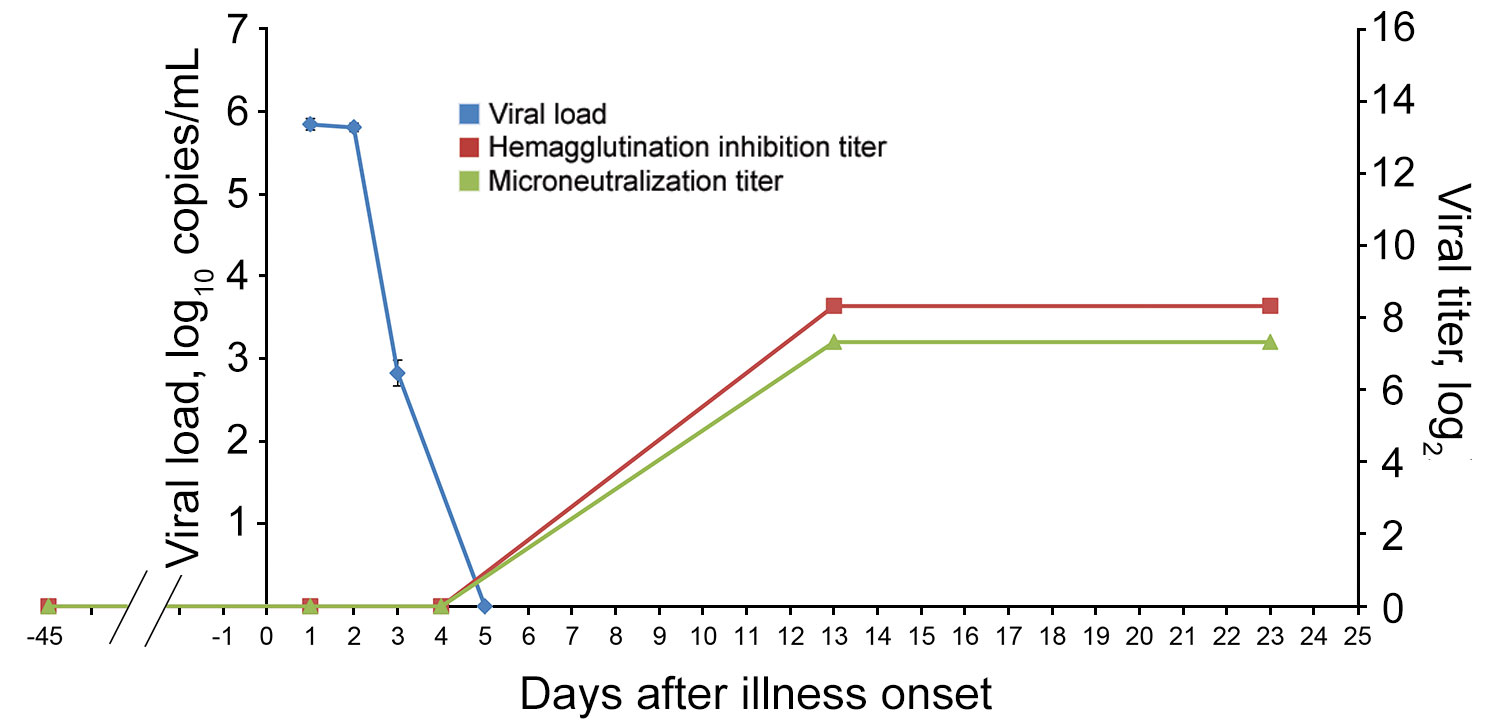Volume 25, Number 12—December 2019
Dispatch
Influenza A(H1N1)pdm09 Virus Infection in a Captive Giant Panda, Hong Kong
Figure 1

Figure 1. Viral load and serologic response to influenza A(H1N1)pdm09 in nasal and serum samples from an infected giant panda in Hong Kong, China. Hemagglutination inhibition (red) and microneutralization (green) antibody titers are shown on a log2 scale, and viral load (blue) shown as mean viral load ± SD (log10 M gene copies/mL).
1These authors contributed equally to this article.
Page created: November 18, 2019
Page updated: November 18, 2019
Page reviewed: November 18, 2019
The conclusions, findings, and opinions expressed by authors contributing to this journal do not necessarily reflect the official position of the U.S. Department of Health and Human Services, the Public Health Service, the Centers for Disease Control and Prevention, or the authors' affiliated institutions. Use of trade names is for identification only and does not imply endorsement by any of the groups named above.